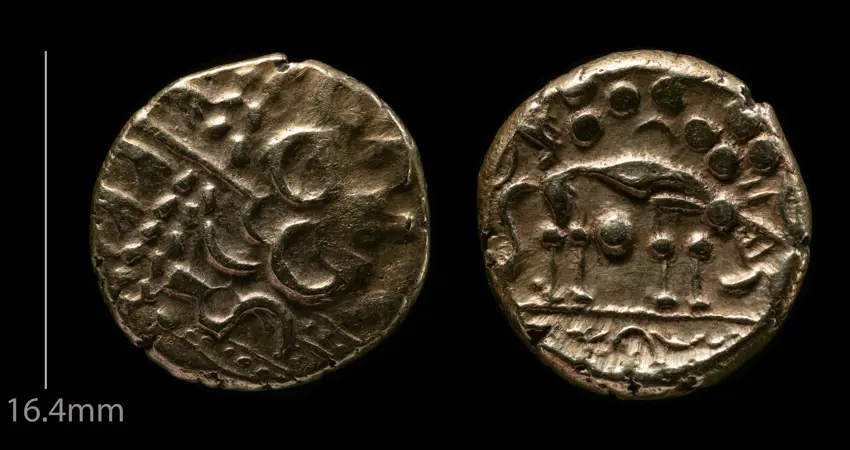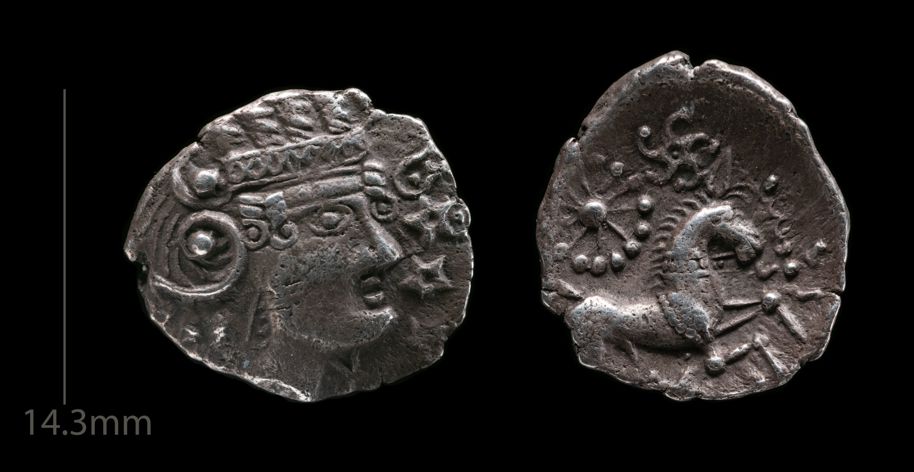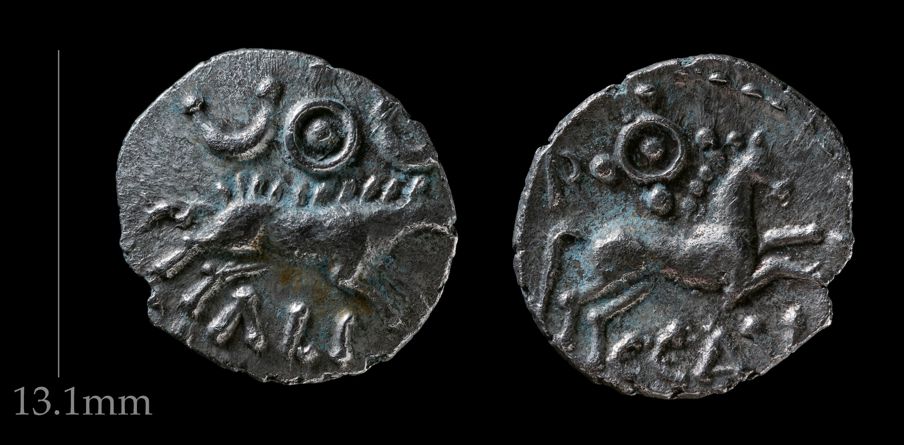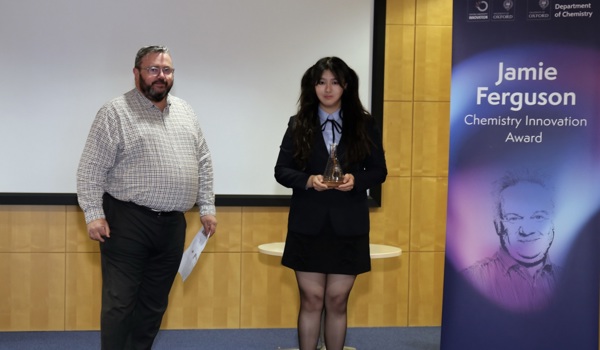17 Jun 2022
Engineering meets archaeology: 3D printing Iron Age coins
3D printed replicas of ancient coins from the Ashmolean Museum’s Talbot collection reveal details on Iron Age life

A gold stater from c. 55–15 BC. Brooches or fibulae are depicted alongside an abstracted head on the obverse (convex) side, and an image of a wolf is depicted on the reverse (concave) side. (© Ian R. Cartwright, Institute of Archaeology, University of Oxford)
Ancient artifacts have much to teach us about our past, but are rare, highly detailed and often delicate which makes it difficult for wider audiences to get close and interact with these objects without damage. However, a recent collaboration between the University of Oxford’s Department of Engineering Science and School of Archaeology is bringing archaeology into the hands of the public through the power of engineering.
Dr Peter Walters, 3D printing engineer from the Department of Engineering Science, and Dr Courtney Nimura, post-doctoral archaeology researcher and curator at the Ashmolean Museum of Art and Archaeology, worked together on a recent project to produce large scale replicas of Iron Age coins using 3D printing technology. “The coins used to make the replicas are part of a world-class collection of Iron Age coins 'recently donated to the Ashmolean Museum by Dr John Talbot through the Cultural Gifts Scheme'”, Dr Nimura tells us.
“The coins chosen for 3D scanning and printing are exquisite examples of some of the most iconic Icenian types in both gold and silver.”
“In the Late Iron Age (c. 100 BC–AD 50), a community known today as the Iceni” says Dr Nimura, “were living in northern East Anglia. This was the home of the famous ‘queen’ Boadicea, who fearlessly led an uprising against the Romans in AD 60/61.”

A silver unit from c. 30 BC. The head on the obverse has locks of hair and ornate bands across the forehead. When the coin is turned, the front lock of hair becomes a second eye, revealing a hidden face. On the reverse, a prancing horse is shown with ‘sun’ motifs. (© Ian R. Cartwright, Institute of Archaeology, University of Oxford)
“The Iceni are well known for having minted ornately designed coins in gold and silver. Although they are sometimes referred to as a ‘tribe’ by this name, we don’t actually know if they identified themselves in this way in the pre-Roman period, as they did not write their own history. In fact, the coins bear the earliest writing by the Iceni themselves, in the form of inscriptions.”
Nimura explains, “The coins chosen for 3D scanning and printing are exquisite examples of some of the most iconic Icenian types in both gold and silver.”
Creating the replicas requires multiple steps before going to print, as Dr Walters explains, “Optical 3D scanning is used to capture the three-dimensional shape of the coins. This data is converted into a 3D mesh model in which the surfaces of the coins are represented by a network of tiny triangles.”
“3D printing software is then used to slice the 3D model into a series of 2D slices which are printed one layer on to of another to build up the shape. The material used for printing is a light sensitive liquid resin which solidifies when exposed to UV light. Objects are built up at high resolution with a layer thickness of 32 microns, giving smooth surfaces and a high level of detail. Objects are supported during printing by a temporary wax support material which is easily melted away once printing is completed”. The 3D printing process takes approximately 4 hours to produce a large-scale replica coin 10cm in diameter at high resolution.
“The replicas can be used for handling collections and outreach, so students, children, and other members of the public can inspect them first-hand”
The coins chosen for 3D printing reveal aspects of Iron Age life and culture, Nimura tells us, “There is much we do not know about the people we refer to as the Iceni, but archaeologists and numismatists can learn a lot from the coins they made in this time before written history.”

A silver unit from c. AD 25. The obverse portrays a torc and ring above a boar, and the letters ALI below. On the reverse we see another prancing horse with the letters SCA. We do not always know what these letters mean. They could have been names of traders, moneyers, places, or specific communities (© Ian R. Cartwright, Institute of Archaeology, University of Oxford)
“From their imagery, we know that animals were an important part of Iron Age belief systems; from their standardised weights, we learn that the different denominations were tightly controlled, which hints at certain economic structures. And from the depictions of certain faces, we can infer political changes. They also had intriguing aesthetic sensibilities, often including visual tropes such as hidden faces in their coins.”
“We always enjoy working on interdisciplinary projects when engineering can contribute to areas outside the norm”
This unique use of engineering makes visible the finest details of these intricate coins and enables the wider public to enjoy them. Nimura explains, “The replicas are a fantastic teaching tool. Because of the coins’ small size (some are as big as my tiniest fingernail), it is difficult to see their incredibly detailed ornamentation from behind glass in a museum display. The replicas can also be used for handling collections and outreach, so students, children, and other members of the public can inspect them first-hand. The scanning also allows us to create 3D models that can be explored online”
Walters concludes, “It was great to be approached by Courtney and to be invited to contribute to this project. We always enjoy working on interdisciplinary projects when engineering can contribute to areas outside the norm. It’s fascinating to think how the coins were made originally, and how new technology can help shed light on that, and also make the exquisite, highly detailed designs visible and accessible to a wider audience.”
The Talbot Collection and replicas are free to see at the Ashmolean Museum in the Money Gallery, as part of the special display ‘’From Julius Caesar to Boadicea – a century of Icenian coins’ until 2 October 2022.




